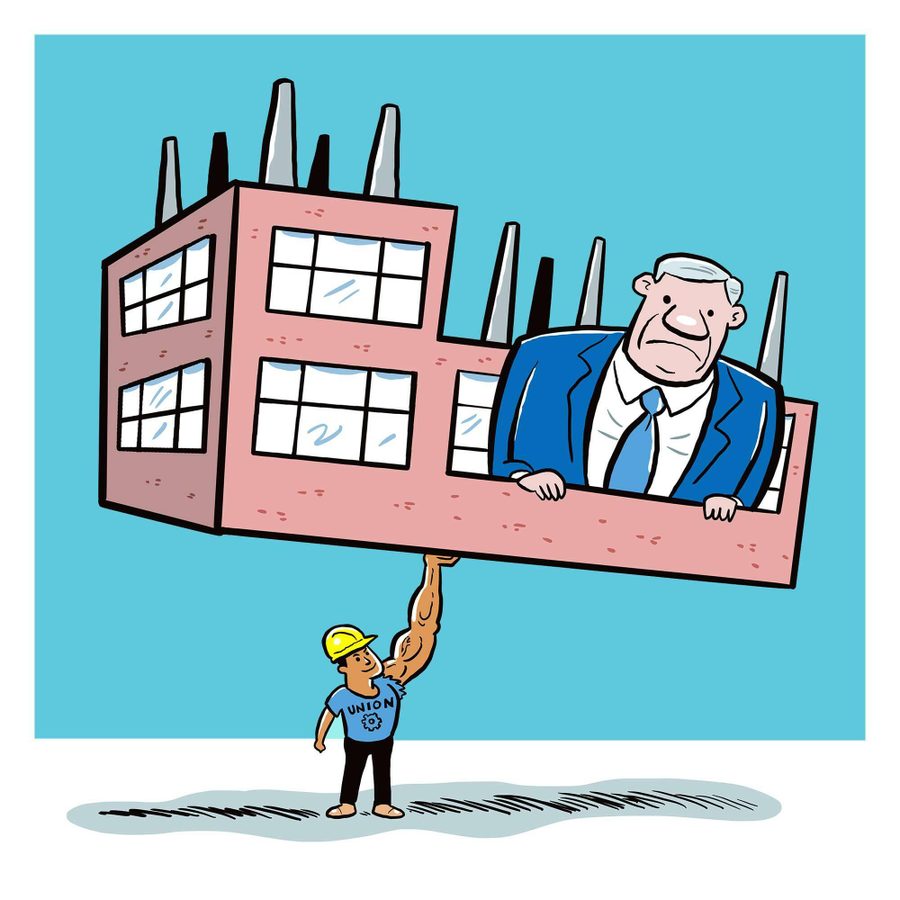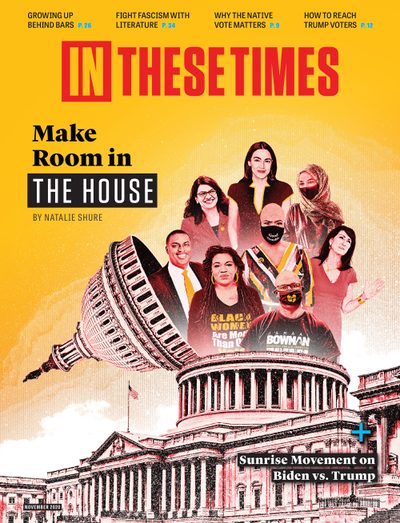How to Boost Unions’ Power? Sectoral Bargaining.
Industry-wide bargaining could decrease inequality and improve livelihoods for unionized workers.
In These Times Editors

sec•tor•al bar•gain•ing
noun
1. a labor policy that enables
unions to set standards for
their whole industry, boosting
their leveraging power
Why can’t unions do “sectoral bargaining” now?
In theory, they can — and have before. In 1980, for example, about a tenth of workers were covered by multi-employer agreements that set industry-wide standards, especially workers in steel, auto, trucking, construction and mining.
What happened? An onslaught of deregulation and anti-union attacks reversed those gains.
Only 11% of workers are covered by union contracts today, total. (And just 6% of the entire private sector.) Unions simply lack the power and membership to organize entire sectors and industries. Sectoral or multi-employer bargaining does exist — in heavily unionized industries, like hospitality — but, mostly, unions negotiate wages and improve conditions at one individual worksite at a time.
How much of a difference would sectoral bargaining make?
You may have already heard of the “union difference”—that the average unionized worker has higher wages, better benefits and safer working conditions than a non-union worker. There’s also a “sectoral bargaining difference” (the phrase just isn’t as catchy). In European countries where industry-wide bargaining is routine, union contracts cover more workers and have an even greater impact on decreasing economic inequality while improving work-life balance. German metalworkers, for example, won a 28-hour work week in 2018.
Less inequality and more power for workers sounds good. How do we get sectoral bargaining?
We have a bit of a chicken-and-egg problem: To build a stronger labor movement, we could use better labor law that favors working people — prevailing wage laws, for example, would help force employers to negotiate industry-wide standards. But to win better labor law, we could really use a stronger labor movement.
So the place to start is wherever you happen to be: Labor needs more union membership. And pretty much everyone in labor agrees it needs to be easier for workers to join unions.
The Protecting the Right to Organize Act would remove some of the major difficulties faced by union organizers and passed in the House earlier this year. It now waits in the Senate. Like so much else, its chance of becoming law any time soon greatly depends on who wins in November. If it does pass, unions can begin the process of rebuilding their bargaining power from the bottom up.
This is part of “The Big Idea,” a monthly series offering brief introductions to progressive theories, policies, tools and strategies that can help us envision a world beyond capitalism. For recent In These Times coverage of sectoral bargaining and the labor movement, see, The Case For Sectoral Bargaining Is Now Stronger Than Ever, Is the Conservative Case for Organized Labor an Oxymoron?, and What’s at Stake for the Labor Movement on Election Day? Everything.








